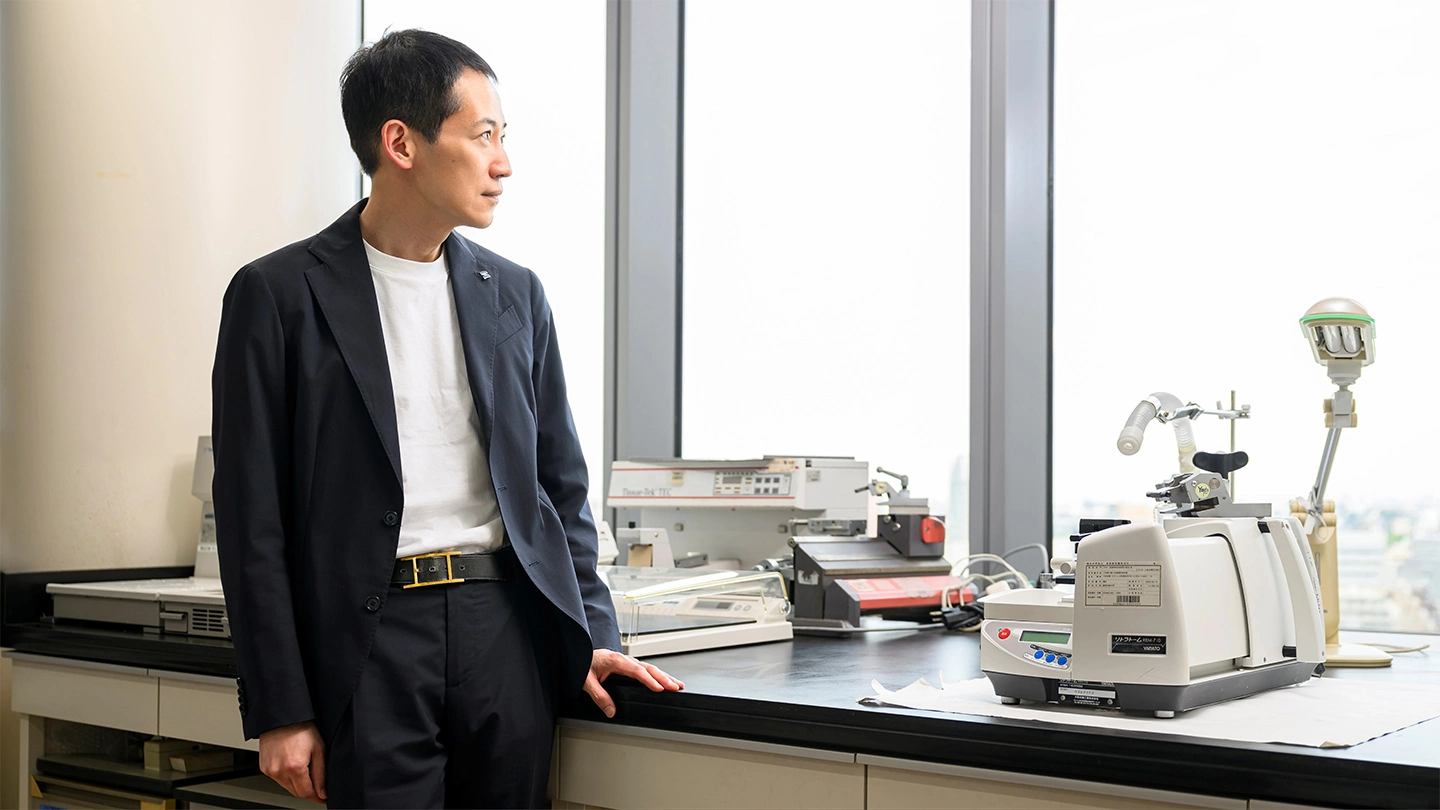
Institute of Science Tokyo (Science Tokyo) launched the Visionary Initiatives (VIs) - a cross-disciplinary, integrated research framework - in the 2025 academic year to co-create new value with society while advancing science and human wellbeing. Currently, six VIs are tackling the challenge of shaping a future, with each developing distinct shared visions for societal transformation based on three pillars: "Better Life," "Better Society," and "Better Planet."
One person taking on these challenges is Professor Fumihiko Ishikawa, a leading leukemia researcher. As the program director (PD) of the VI Total Health Design ― Achieving the health and wellbeing of all, Ishikawa is determined to shape the future by linking basic and clinical research with people, society, and the world. In this article, he discusses his mission as a physician-researcher, the pathways he plans to pursue to achieve it, and the future he is committed to delivering for society and the global community.
Harnessing diverse expertise to solve healthcare issues
Could you tell us why you decided to pursue leukemia research, and how you intend to bring that determination to the Total Health Design initiative?
Ishikawa Our research is driven by a sincere desire to stand with patients in pain and relieve their suffering. A respected leukemia specialist at Toranomon Hospital in Tokyo once told me: "There are still patients we cannot save even when we provide the best possible care. I want you to conduct research to save those patients." His words remain deeply ingrained in my heart. We place importance on conducting research based on the understanding of unresolved problems in clinical care. My research began with the aspiration to share, with my colleagues, a commitment to understanding and overcoming patients' suffering.
The same principle guides the Total Health Design initiative. This initiative aims at connecting clinical and basic research across medicine, dentistry, science, and engineering, as well as linking these fields to people, society, and the wider world. As the PD, I want to pioneer a new form of healthcare. By collaborating with researchers from diverse specialties, we can develop practical solutions for on-site challenges seen in different fields. It is also essential that Total Health Design serves as a bridge between the belief of scientists and engineers that their work benefits society, and the practical needs of clinicians and those who deal with social issues.
Scientific resonance as the Foundation of Future Therapies
What new goals do you envision now that various specialists are converging within your VI?
Ishikawa Human life depends on multiple systems: the brain and the nervous systems, the heart, the digestive and the respiratory systems, the urinary system, and metabolic functions. However, intractable diseases that threaten these systems-not only leukemia but also malignant conditions like solid tumors and sarcomas-continue to affect many patients despite our long history of medicine and drug discovery. Recent research has also demonstrated that oral health problems can negatively impact systemic functions essential to maintaining health, including the brain and metabolic functions. To prevent disease and save lives at risk, I believe it is crucial to promote diversity across disciplines, not only medicine and dentistry, but also science and engineering (including information science), as well as diversity in the broader sense: nationality, culture, gender, and background.
Why do diseases recur? Why are lives lost? To answer these questions, we are realizing more and more the importance of integrating diverse perspectives, such as genetic analysis, research on energy metabolism, and technologies that enable precise drug delivery to diseased parts of the body. Researchers at Science Tokyo are global leaders in these areas. We prioritize understanding disease mechanisms as the foundation for discovering treatments and therapeutics that can save patients. To achieve this, researchers from the fields of medicine, dentistry, science, and engineering think together and collaborate closely to translate their research results into clinical practice. This is how I conceive the initiative.
It embodies a resonance between medicine's essential purpose - relieving pain and suffering - and science's pursuit of truth. This synergy will pave the way for future treatments. We also aim to create a society where disease prevention is enabled through monitoring daily life, conducted only with individuals' informed consent.
I see the VI as a valuable research framework for accelerating these collaborations. For example, one team within our VI is studying how maintaining oral health can protect elderly people's cognitive function and overall health. Another researcher is harnessing AI to transform a drug discovery process, which currently requires a great deal of time and expense, into a safer, more efficient system. A third is developing technology to analyze cells at the genetic and proteomic levels in pre-symptomatic individuals, enabling earlier disease detection.
These projects are still at the research stage and require further validation. However, I believe the diverse knowledge we are accumulating will be integrated into a strong foundation for delivering real solutions to society. Our ultimate goal is to deliver research results that genuinely help people achieve health and wellbeing.
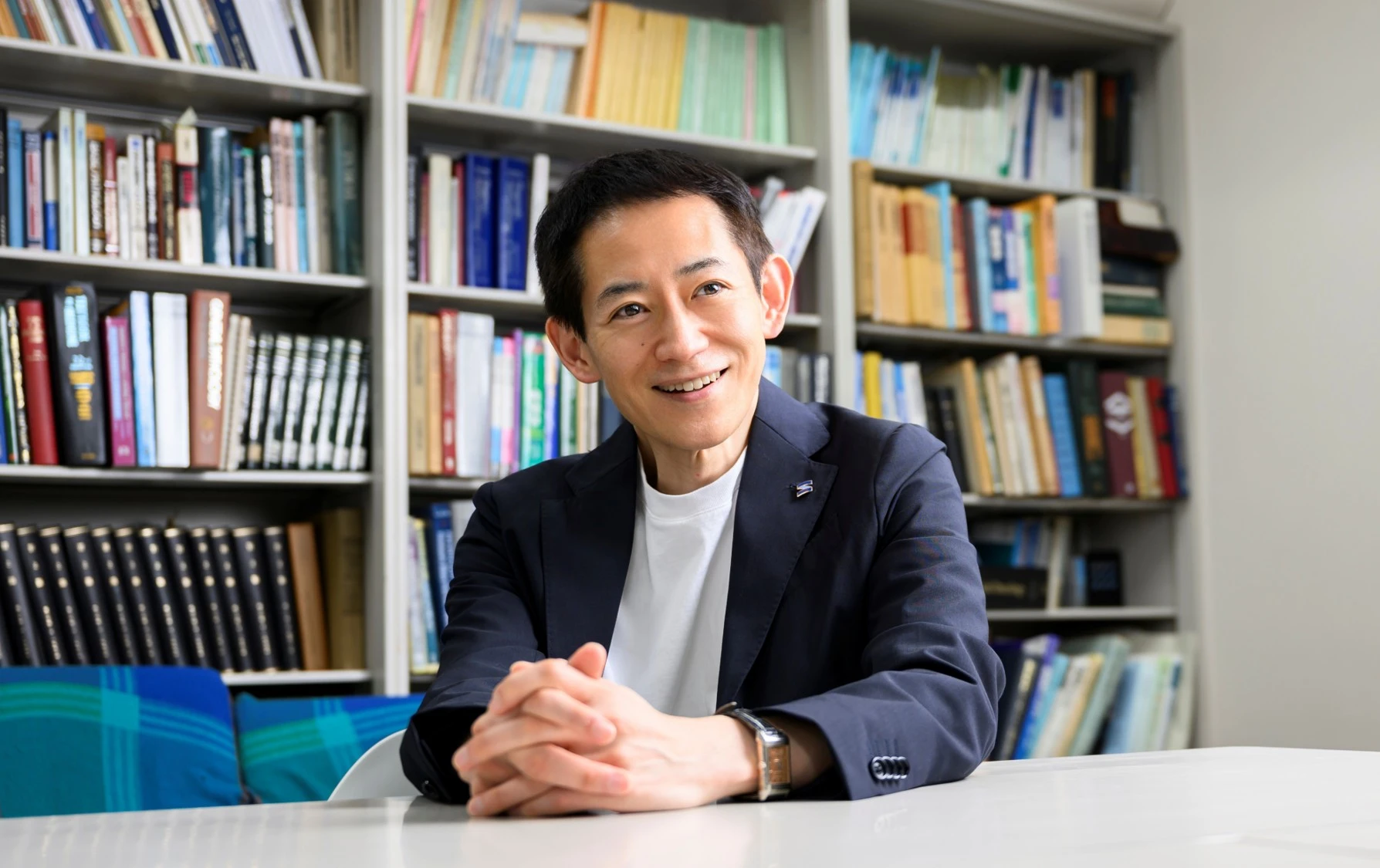
Finding courage and hope in the united efforts
Could you describe an episode that has stayed with you from collaborating with researchers in different fields?
Ishikawa As I pursued research into leukemia, one of the biggest challenges was identifying the cause of recurrence. To address this problem, interdisciplinary collaboration became our greatest strength. Working with data scientists and geneticists, we identified a target gene among tens of thousands. Chemists and computer scientists then proposed a compound that might inhibit the target protein. An electron microscopist visualized how the compound binds to the protein, and clinical and basic researchers subsequently verified the findings.
This shared determination to save patients resonated across disciplines, producing united efforts that brought courage and hope. This experience left a lasting impression on me. In our VI, I hope we will proactively consider how to translate research findings into new treatments and bring them safely and swiftly to patients, while working closely with translational specialists, industry partners, and collaborators outside the university.
Resonance sparks new ideas and opens the way to a brighter future
What is your approach to bringing a large, multidisciplinary team?
Ishikawa I'm always mindful of critical questions: What essential problems do we want to solve, despite our different backgrounds? As the PD of a 54-member research team, I pay close attention to moments of mutual resonance with colleagues in other fields. Those moments often spark new ideas and technologies that point toward the future.
Rather than merely assembling a group, I focus on engaging with individuals across disciplines to find common ground and share critical questions. This shared inquiry creates the commitment needed to address challenges collectively and work toward the result that everyone wants to achieve. I aim to employ both top-down direction and bottom-up initiatives so that these approaches naturally align. I believe that our research framework, focused on interdisciplinary and intergenerational efforts aimed at passing knowledge to the next generation, will lead to a brighter future for society and the wider world.
Finally, could you share a message with the next generation who will shape the future?
Ishikawa Health issues vary across countries and regions, but the universal desire to help those who are suffering is a fundamental aspect of humanity. Passing down this spirit of compassion to younger generations is one of our most important missions. I hope that young people will keep this in mind, engage in global dialogues that transcend national borders and cultures, and work together to create a new future centered on health.
To support this vision, research and healthcare must adopt a perspective that considers people's daily lives alongside efforts to overcome disease. I believe that when people who have already taken on diverse societal roles begin to connect across generations and national borders- in ways that feel natural and comfortable for each person-they can help build a society where everyone's health is gently protected, supported, and cared for with compassion.
We are committed to developing approaches that enrich the lives of patients and their families every day. Through this challenge, we hope to create a world where people's hearts resonate with one another, fostering empathy and mutual care.
Interview date: August 7, 2025 (via Zoom)
Fumihiko Ishikawa, Professor
Department of Comprehensive Pathology
Institute of Science of Tokyo
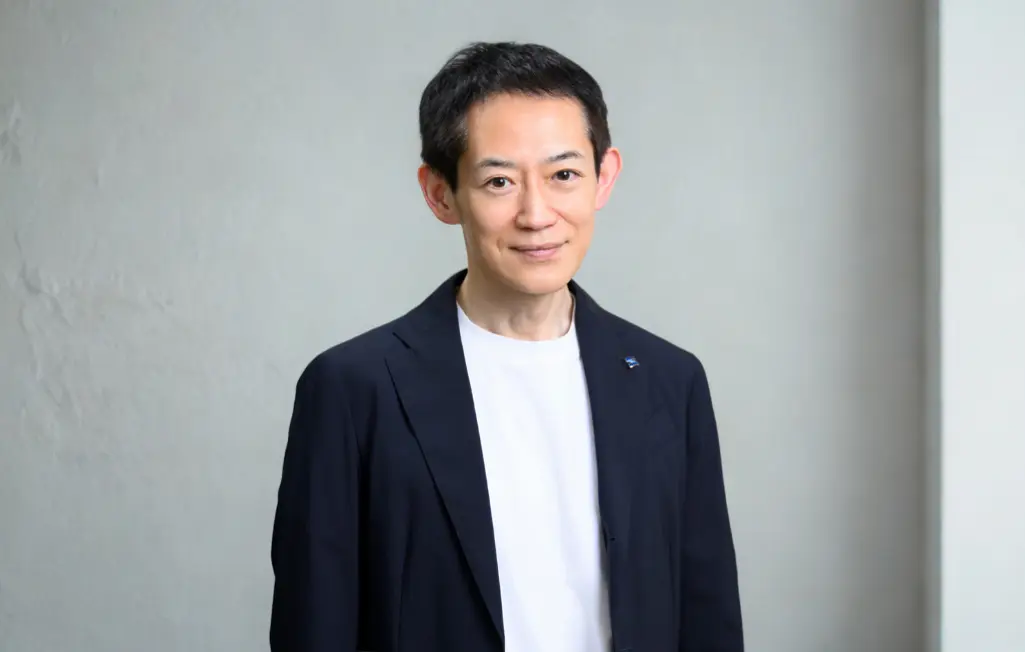
ーTotal Health Design: Achieving the health and wellbeing of allー
Total Health Design aims to enable all to enjoy mental and physical health effortlessly.
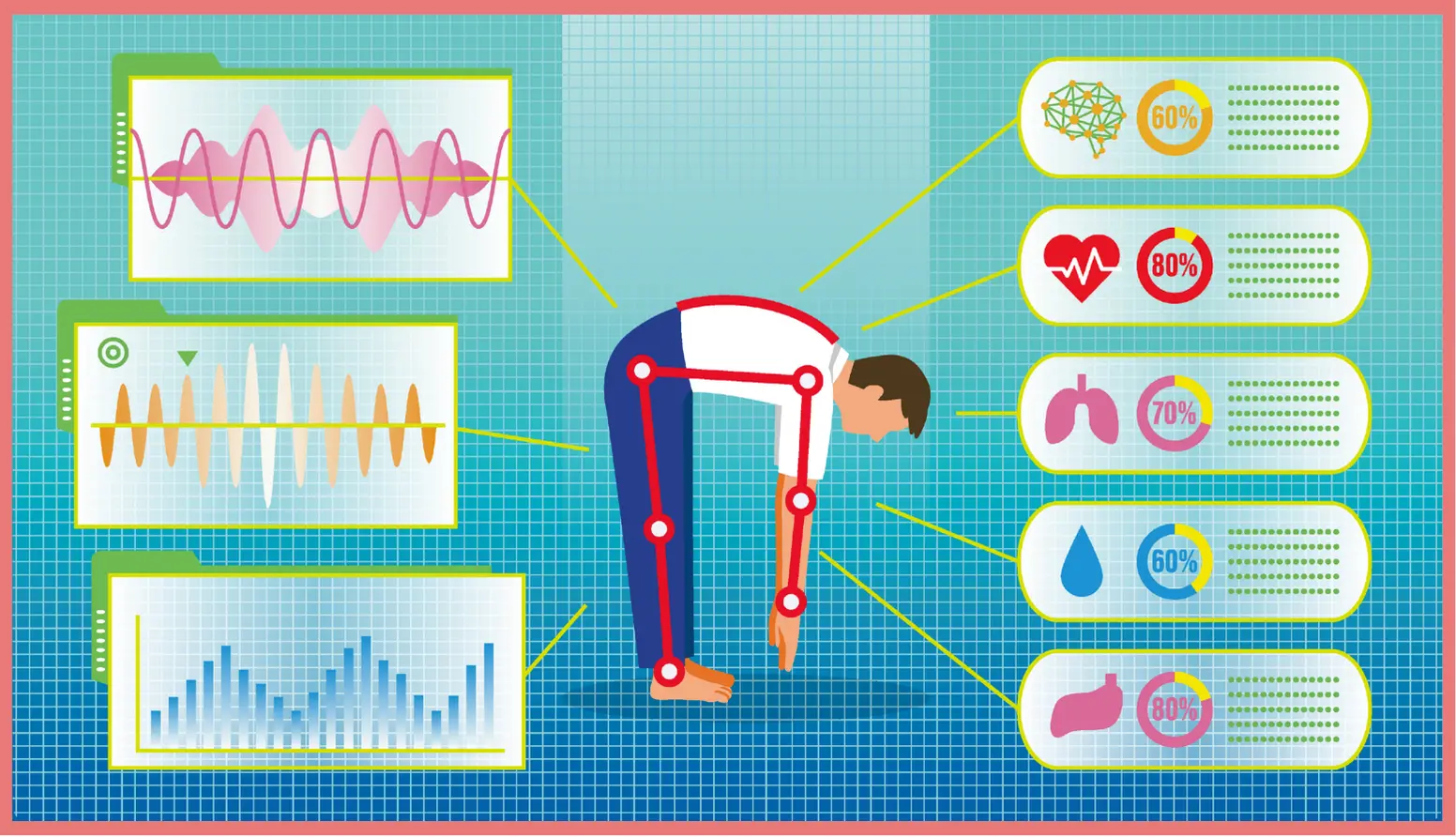
・Prevention and diagnosis in daily life
・Effortless health management
・Extending healthy life, including brain function
・Domestic materials supporting walking and body movement
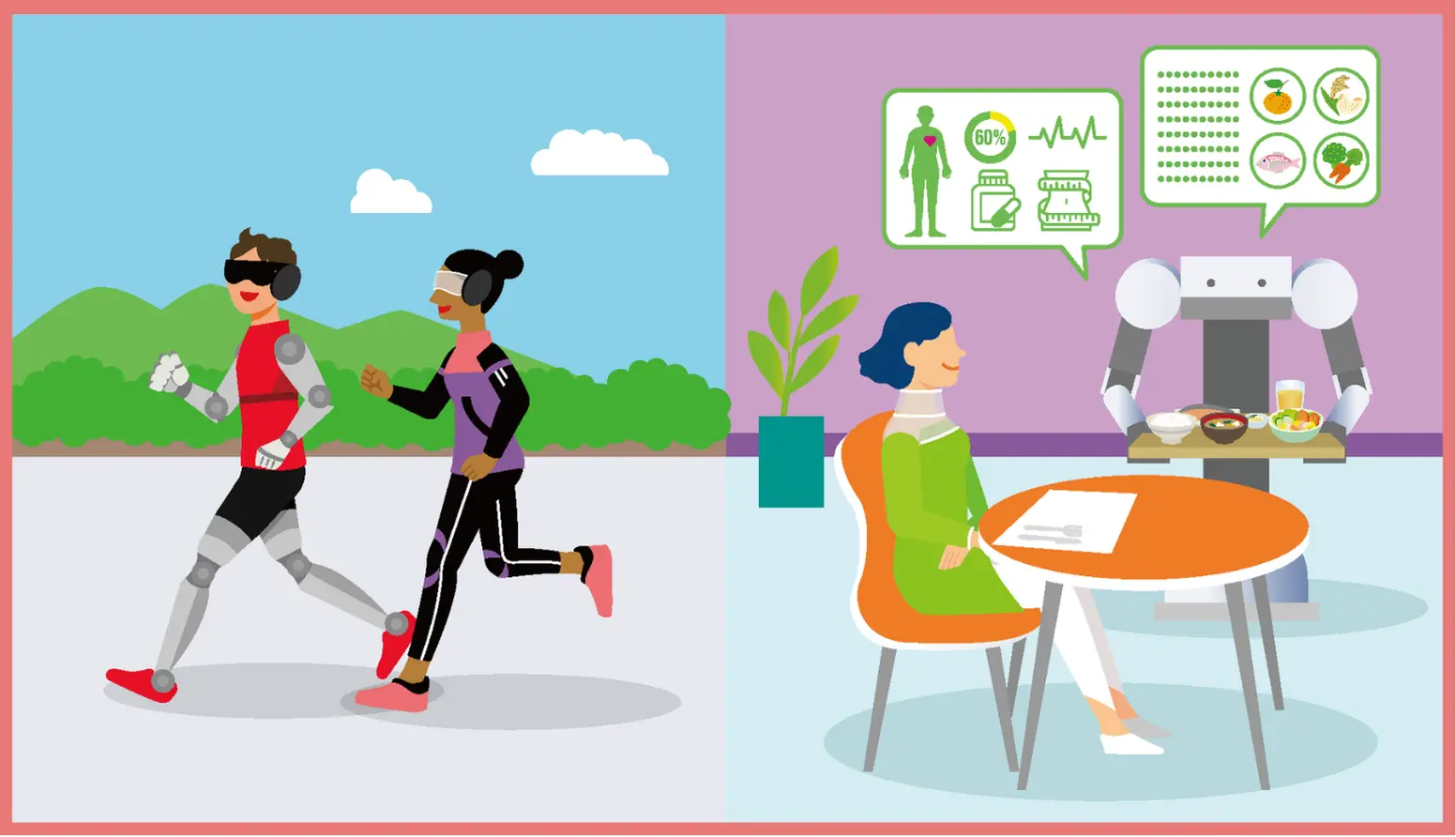
・Conquering cancer and intractable diseases
・Protect the cardiovascular, metabolic, and digestive systems
・Preventing disease recurrence and maintaining health through diet
・Medical care with no disparities across regions and countries
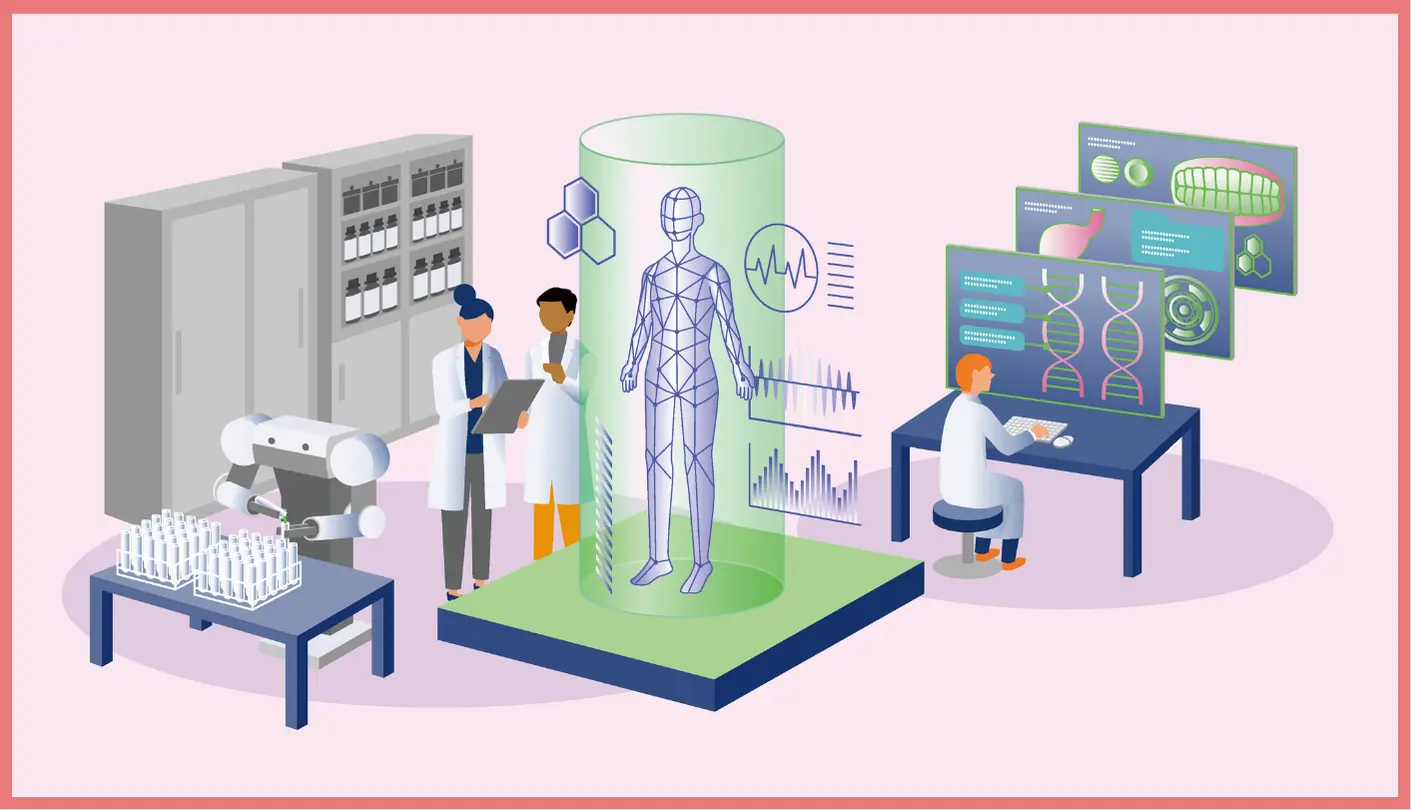
・Treatment, clinical trials, and simulations in digital space rather than using a physical body
・Accelerate drug discovery with AI technology
・Next-generation tailor-made medicine with maximum therapeutic effect and minimal side effects
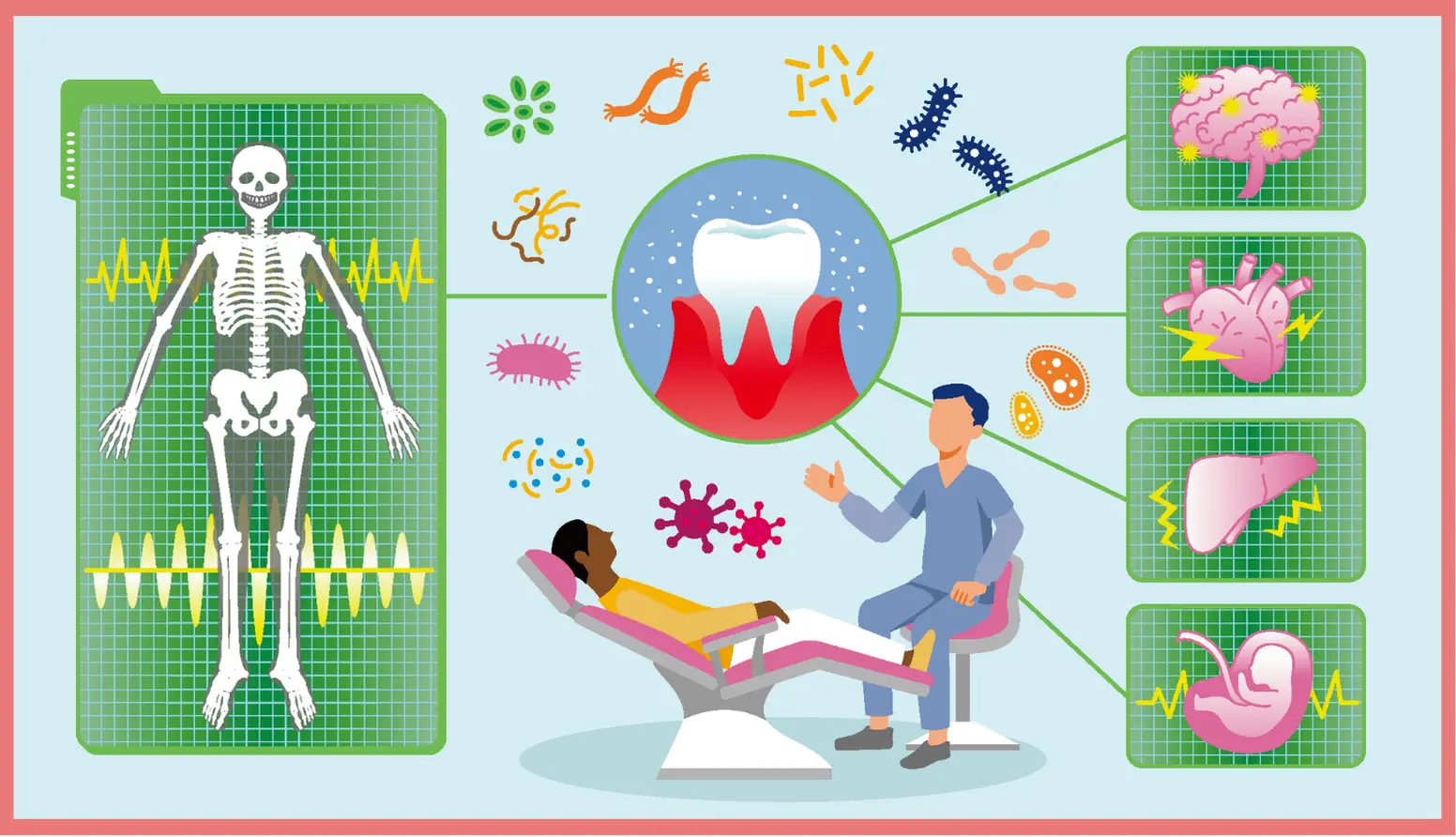
・Improvement of overall health through enhancement of oral function
・Long-term maintenance of oral functions through digital dental treatment
・Clarification of the connection between oral bacteria, dementia, and systemic diseases






